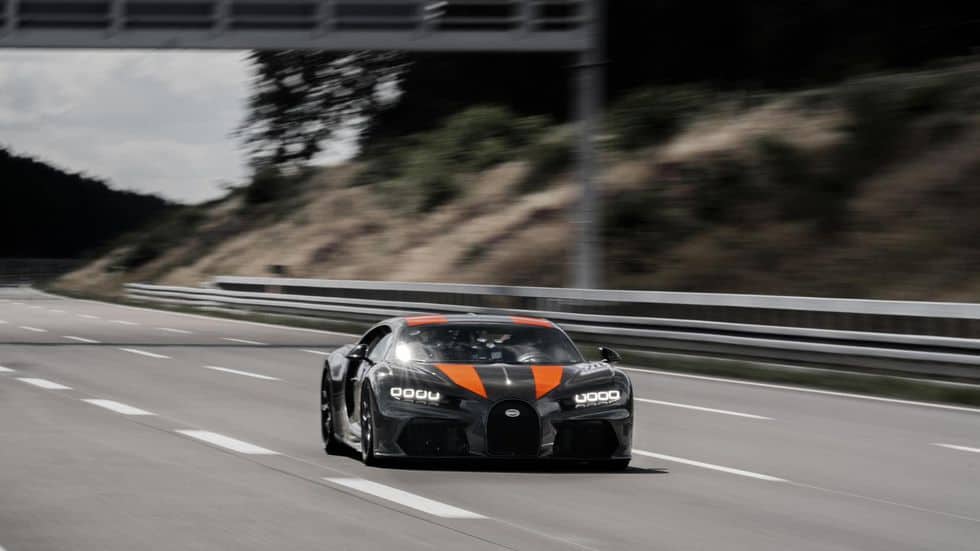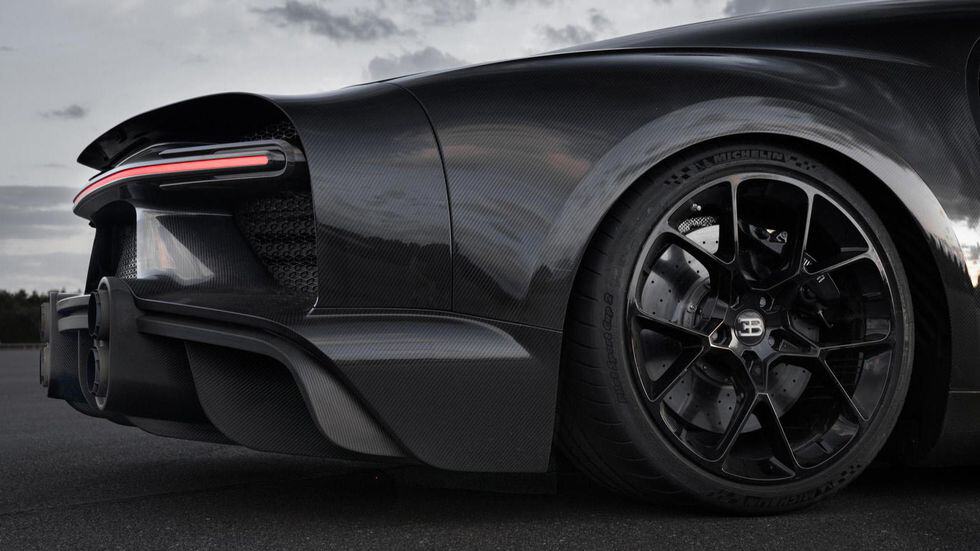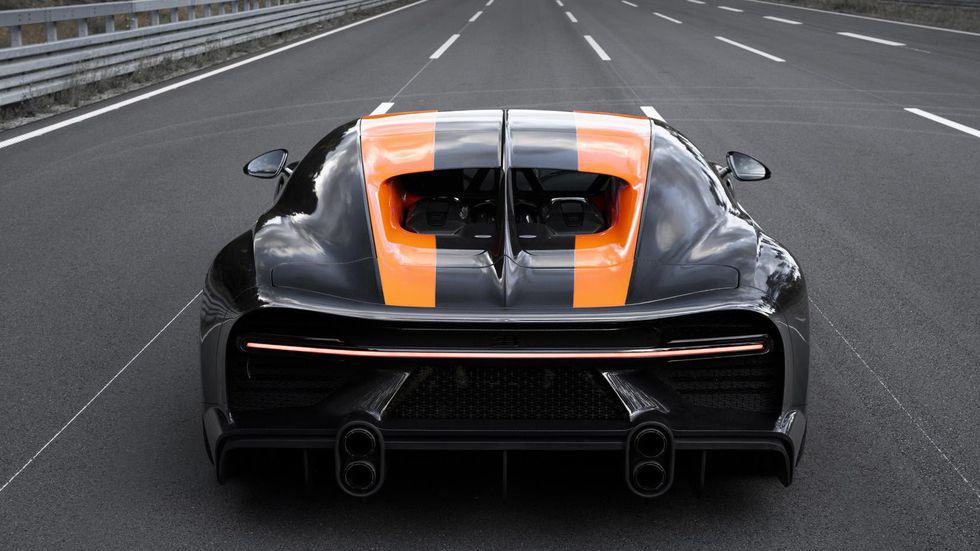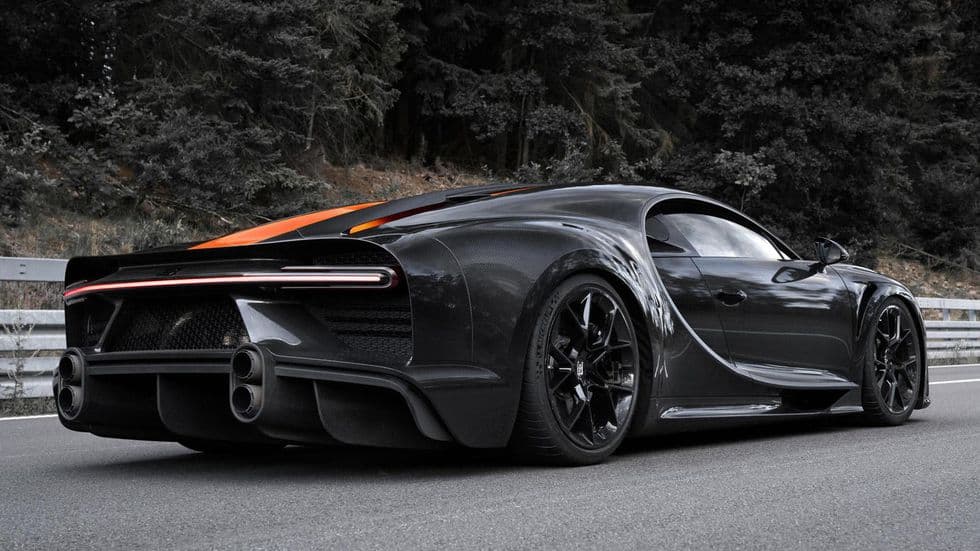The Bugatti Chiron is officially the world’s fastest supercar — and by quite a long shot, too. Top Gear broke the news on Monday, confirming Bugatti test driver, Andy Wallace, reached a v-max of 304.77 miles per hour on the Volkswagen Group’s Ehra-Lessien test track in Germany.
The insane top speed was verified by Germany’s TÜV, or Techincal Inspection Association, according to Top Gear. This makes the Chiron the first supercar to break the 300-mph barrier.
But this isn’t just any stock Chiron. The Dallara-supplied body has been optimized for aerodynamics, and is actually about 10 inches longer than a standard Chiron. The car sits lower to the ground and the rear end has a modified exhaust similar to that of the one-off Centodieci. Furthermore, the Chiron’s rear wing and airbrake were jettisoned and a new rear aero piece is integrated into the car’s tail. Inside, the Chiron does not have a passenger seat, though a safety cage was added because, well, duh.

Bugatti via TopGear 
Bugatti via TopGear 
Bugatti via TopGear 
Bugatti via TopGear 
Bugatti via TopGear 
Bugatti via TopGear 
Bugatti via TopGear 
Bugatti via TopGear 
Bugatti via TopGear
As for power, the record-setting Chiron uses the same 8.0-liter, quad-turbo W16 engine found in the stock car, though it has the 1,600-horsepower tune of the Centodieci. Top Gear says the car’s gearbox and all-wheel-drive system are unchanged from the stock Chiron.
Michelin played an integral role in the Chiron’s top speed run. The tiremaker created special Pilot Sport Cup 2 tires, according to Car and Driver, that are capable of rotating up to 4,100 times per minute. The tires were even X-rayed before being fitted to the Chiron to make sure no imperfections were present.
“The biggest challenge is to get the overall package right — not only design, not only aerodynamics, not only engine, not only tires,” Bugatti’s Frank Heyl told Top Gear. “It’s to get everything together and working in one car.”
Top Gear says this modified Chiron will likely come to production as some sort of Super Sport model, though who knows if the road-going car will be able to hit that 300-mph top end. Regardless, as far as ultra-fast cars go, there’s officially a new, super-impressive benchmark.











